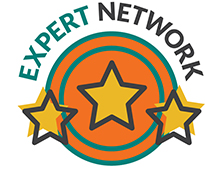3 Surefire Approaches To SOP Harmonization
By Penelope Przekop, MSQA, RQAP-GCP
Standard operating procedures (SOPs) have become the documentation backbone of our industry and, yes, at times, a major pain in the neck. Those of us who were around during the 80s may be able to recall fuzzy memories of SOPs being a thing . Fast forward to 2019, past the birth of ICH, the evolution of outsourcing, the techno explosion and the FDA’s 21 CFR Part 11, the EU obsession with quality systems, and the more recent rise of the big vendor. Today, we’re buried in mountains of SOPs.
being a thing . Fast forward to 2019, past the birth of ICH, the evolution of outsourcing, the techno explosion and the FDA’s 21 CFR Part 11, the EU obsession with quality systems, and the more recent rise of the big vendor. Today, we’re buried in mountains of SOPs.
We’ve morphed into an industry filled with pharma and biotech sponsors and vendors of all sizes acquiring each other, partnering, joining, splitting up, starting over, growing, dying, and evolving in a dynamic technologically driven culture highly supportive of entrepreneurship. Sounds great, right? Can’t we just go with it? Think outside the box, innovate, and save the world from pain, disease, struggle, and illness by providing great products and services? Sure!
Just remember, you’d better make sure that mountain of SOPs continues to clearly describe your actual, real-time processes (without inaccuracies, gaps, or redundancies) as well as who does what when. Oh, and don’t skip a beat on your organizational, regulatory, or financial timelines while minding the mountain. Can we all relate and groan now? How are we going to do this, especially in the face of organizational change, and with auditors and regulators dropping by any day? The good news is that everyone has agreed that harmonization of SOPs is the common-sense answer.
Almost every company I visit in my consulting work is undergoing some type of SOP harmonization. It seems that the approach is often driven by the level of senior management support, the experience and expertise of those spearheading the effort, and the organization culture. These three aspects often seem to determine how quickly and well the whole thing gets done. It’s an activity where lack of strategy, inefficiencies, and fear of stepping on toes can produce gridlock in the most well-intended initiatives.
So how the heck are companies supposed to make the SOP mountain smaller through harmonization?
Strategy Is Critical
The most critical first step in your harmonization effort is for senior leadership to set and communicate the strategy. Compliance strategy is just as important as all the other strategies they’re so skilled at developing. After all, this isn’t just about creating documents called SOPs. This is about harmonization of processes, workflows, logos, titles, roles and responsibilities, company-wide policies, definitions, forms, and templates. It’s also about communicating a new vision, building the company you envision, and engaging employees, all while ensuring the company is legally compliant with applicable global regulations.
The most critical first step of your strategy is to establish a company-wide quality system; this will be the framework for all SOP harmonization activities. I often see quality systems-related processes and SOPs pushed aside for a laser focus on operational SOPs, which is often the first misstep. How can you efficiently harmonize operationally when you’ve not established and communicated the foundation for a seamless, united company? Everyone is still building on their own foundation. It’s like telling a bunch of neighborhood kids to go build a fort without explaining which yard you want it built in, what kind of fort is to be built, and who’s going to do what. They’ll talk (or worse) all day about whose yard the fort will be in, what kind of fort it should be, and who gets to be in charge. However, if you say, “I want you to build a fort in our new neighborhood playground with Legos I’m donating. Make it as large as possible with the Legos available. Johnny will be in charge because he’s the oldest; he’ll report progress to me every day,” then it’s settled. The fort gets built not only more quickly but to your specifications as well.
Let’s Get Harmonizing
I’m 99 percent sure that if you apply one or more of the following three high-level approaches, coupled with a documented strategy and great leadership, the pain in your neck will ease up and you’ll remain compliant during the process. It’s important to think about which approach might work best for your company given where you are in the harmonization process, the size and maturity of the companies and organizations involved, the number of SOPs to be harmonized, the experience level of your QA staff, etc. The three approaches below somewhat overlap. You can take bits and pieces from each to create the one that will work best for your organization.
Approach 1: Reinvent the Wheel (The ones you have won’t take you far enough.)
Although it goes against conventional wisdom, sometimes reinventing the wheel is the best approach. A good strategy is to identify no more than three qualified QA employees who understand quality systems, the current regulatory requirements and climate, and the business to:
- Agree on a new SOP template
- Agree on an SOP development process that will work well
- Create a Controlled Document Life Cycle SOP (the first new SOP)
- Determine what quality systems SOPs are required and develop those
- Work with the operational experts to create a new basic SOP set that supports the merged organization and its goals.
If this sounds like something you need, my advice is to do it as early in the reorganization process as possible. The key to this approach is lifting the mandate to reuse what is already on paper, to go ahead and reinvent the wheel. Of course, there may be some great documentation to draw upon, but with the mandate lifted, those working on the project don’t have to struggle with merging existing processes, SOP content, templates, forms, etc. Sometimes it is more efficient to throw all that out and develop a new straightforward, efficient process. For example, I’ve seen companies spend over a year trying to harmonize several poorly written SOPs, hoping to ensure that all voices are heard, when they could have tossed those out and developed a process from scratch in a few months’ time. The trick to success in this scenario is being sure you have selected the right individual(s) to lead the project. If that person doesn’t know that some of the existing SOPs are subpar, you’ll end up with a new subpar SOP. And again, it all comes down to great leadership setting and communicating the strategy in a way that helps employees understand the why behind the how and the important role they play.
Approach 2: Select the Best SOPs on Each Topic and Toss Out the Rest (We’re all adults; be practical.)
This is akin to reinventing the wheel; however, it introduces the scenario where one SOP or set of SOPs is designated the best. This takes courage and leadership. It takes a leader and/or team skilled and brave enough to tell a bunch of people from a bunch of companies or organizations that while they may be in love with their existing SOPs, something like, “We are all members of a new company/organization now. We are going to operate in efficient ways, and therefore, we’re not going to spend months discussing everyone’s process, putting them all in a giant spreadsheet, and having a million rounds of SOP reviews. We’re going to rely on QA experts to review and select the best existing SOPs on each topic from an audit and inspection-readiness perspective. Then we will work with selected subject matter experts to review and finalize the new set.” Bam!
Approach 3: The Biggest Company Wins (Everyone else can still get a trophy.)
Many of us have been through mergers and acquisitions. Sometimes it hurts. This is your job; it’s business. Don’t take it personally. If something you worked so hard on gets tossed out because you’ve joined a bigger fish, try to embrace the experience, the growth, the new journey, and the fact that the short road you’ve been walking on just got longer and more exciting. If the “mothership” has decent SOPs, embrace them. With that said, depending on the situation, the mothership’s SOPs may likely still need updating. However, updating them is going to be a lot less cumbersome than the huge project of trying to please all the kids. Again, the key here is leadership. Company culture and employee morale matter. Most people have worked hard to get to the road they’re on and change can be scary. In this case, everyone does need a trophy. They need to understand and to feel counted and appreciated. But don’t show them that by creating an inefficient SOP harmonization strategy that ties up the company for months in ongoing process discussions that begin to feel like slowly peeling off a Band-Aid. Tell everyone what’s going to happen and why, rip off the Band-Aid, say ouch together, and then give them something they can and should feel good about. (No, I don’t know what that is. I trust that great leaders can figure it out.)
Conclusion
Regardless of your harmonization strategy, document it in an SOP Harmonization Strategy Plan. This can be presented to auditors or regulators, if necessary, to prove that you have a plan in progress that everyone understands. It also creates a consistent storyboard for inspection readiness. It addresses the question, “How the heck do we explain what’s going on with our SOPs?” when the company is swimming across the biopharma sea of SOP harmonization. Keep calm and carry on; you’ll make it to the other side.
About The Author:
Penelope Przekop, MSQA, RQAP-GCP, partners with pharma and biotech companies of all sizes to develop risk-based strategic solutions for establishing (or enhancing) clinical and pharmacovigilance quality systems that support growth and ensure long-term compliance. She is a global GXP quality systems/assurance and regulatory compliance consultant with 25-plus years of industry experience. Her areas of expertise include strategy development, quality systems and assurance, inspection readiness, and organizational training. She frequently conducts regulatory mock inspections and develops outcomes-based inspection readiness strategies. Przekop has held leadership positions in both Big Pharma and CROs, including Novartis, Covance, Wyeth, and Johnson & Johnson. She is the author of Six Sigma for Business Excellence (McGraw-Hill).
